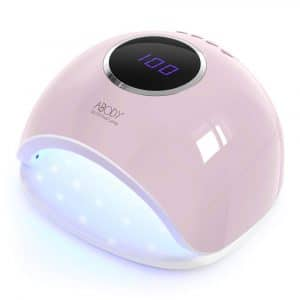
Late last year, optical maser Focus World’s sister publication BioOptics World reportable that per BCC analysis, “The world marketplace for ultraviolet (UV LED LAMP ) medical aid instrumentality was valued at $790 million in 2010 and is predicted to succeed in $1.1 billion by 2013.” Finally, the wonderful advantages of sunshine are being controlled in everyday applications that improve health and therefore the setting whereas reducing energy consumption and limiting the utilization of harmful chemicals.
The BCC analysis report points out, however, that though ultraviolet {light|ultraviolet illumination|UV|actinic radiation|actinic ray} light medical aid for air, water, and surfaces has been practised for quite thirty years, it’s solely achieved a significant share of the medical aid market within the last decade. Why? I could not realize a definitive answer on-line, however abundant of the delay most likely needs to do with accrued analysis on the subject of ultraviolet illumination medical aid and proof that it effectively kills viruses, pathogens, and even bed bugs, lice, and dirt mites. to not mention that lamp and light-emitting diode costs still drop as performance improves.

An excellent application note from ultraviolet illumination light-emitting diode manufacturer Crystal IS —although little doubt biased in favour of the light-emitting diode option—dives into the variations between ultraviolet illumination LEDs and ancient ultraviolet illumination lamps (see chart below). The app note describes, however, the Crystal IS ultraviolet illumination LEDs have focused output within the 255-275 nm UVC range–one of the narrower bands with a shorter wavelength than UVA and UVB, however a small amount longer than the EUV or extreme ultraviolet region. whereas these LEDs will reach power levels of 1-3 W, the costs go up because the wavelength goes down into the UVC region.
Among the lamp choices, noble gas lamps reach many Watts however have a really broad spectrum that spans each ultraviolet illumination and visible/near-IR regions. Mercury-xenon lamps have sharp peaks within the ultraviolet illumination and visual regions, whereas isotope lamps have focused, economical emission within the 180-370 nm ultraviolet illumination varies. sadly, because the chart on top of shows, lamps suffer from the antique afflictions that are inflicting the industry to manoeuvre to light-emitting diode options: Lamps are cheaper these days (about $100 for xenon/mercury-xenon and $300-$400 for deuterium), however, suffer from shorter lifetimes and will succumb to light-emitting diode successes in reduced energy consumption and strength.
Companies providing ultraviolet illumination medical aid products embrace Xenex for surfaces (non-mercury periodic noble gas lamps), Trojan for water purification (lamps), Aquionics for water (lamps and LEDs), and a minimum of eighty-eight a lot of during a ThomasNet search.
There are various alternative resources on-line and videos that specify the utility of ultraviolet illumination medical aid. most significantly, it eliminates the utilization of chemical disinfectants and doubtless halts the creation of even a lot of dangerous bugs that fail to retort to antibiotic treatment. therefore next time you’re within the hospital (for hopefully some minor procedure), you may need to search out get in advance what sort of medical aid the hospital is mistreatment and speak to somebody powerful therefore you’ll be able to place during a sensible word regarding ultraviolet illumination medical aid and facilitate our photonics trade flourish!
UV LEDs have seen tremendous growth over the past many years. this can be not solely the results of technological advances within the production of solid-state ultraviolet illumination devices, however the ever-increasing demand for environmentally friendly ways of manufacturing ultraviolet {light|ultraviolet illumination|UV|actinic radiation|actinic ray} light that is presently dominated by mercury lamps. the present providing of ultraviolet illumination LEDs within the optoelectronics market consists of products starting from just about 265nm – 420nm with a spread of package designs as well as through-hole, surface mount, and COB (Chip-On-Board). There are several distinctive applications for ultraviolet illumination light-emitting diode emitters.
